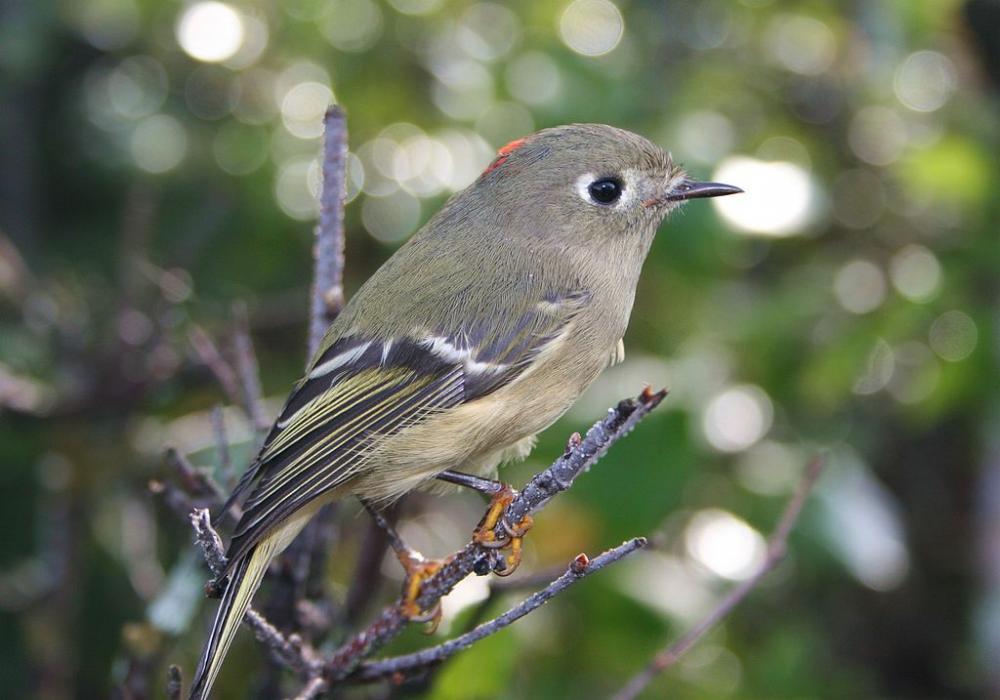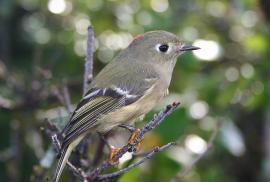Guide to Boreal Birds
Overview
One of North America’s smallest songbirds, Ruby-crowned Kinglet breeds throughout the extent of Canada’s boreal forest. In the eastern part of the range, the highest population densities occur in the black spruce bogs and muskegs of Canada, whereas in the West, spruce-fir, lodgepole pine, and Douglas fir forests are used. This species appears to prefer areas close to water. In spring, males migrate earlier than females; the opposite in fall. Because kinglets weigh little, they are able to feed on the tips of conifer branches. Kinglets primarily eat seeds and the small insects and insect eggs they glean from vegetation. The Ruby-crowned feeds lower in the canopy than the Golden-crowned and characteristically hovers above a twig looking for caterpillars, aphids, and other insects. The Ruby-crowned is not as social in its winter range as the Golden-crowned and occurs singly more often than in flocks. It takes a sharp eye to see the male's red crown patch, which is usually erected for a few seconds at a time when the bird is displaying aggressively. It has a characteristic habit of nervously flicking its wings. This species reaches its highest population densities in unlogged stands of mixed ponderosa pine, white pine, Douglas-fir, white fir, blue spruce and Engelmann spruce. Breeding areas may be adversely affected by logging and wildfire, but human activity probably has minimal effect on wintering grounds because of varied habitats used.
Description
3 3/4-4 1/2" (10-11 cm). Tiny. Similar to Golden-crowned Kinglet, but greener, with no face pattern except for narrow white eye ring. 2 white wing bars with dark area beyond second. Males have tuft of red feathers on crown, kept concealed unless bird is aroused. Hutton's Vireo is larger, with thicker bill, larger head, and no dark area beyond second wing bar.
Voice
Song an excited musical chattering.
Nesting
6-9 cream-colored eggs, lightly speckled with brown, in a large mass of moss, lichens, and plant down with a small feather-lined cup at the top.
Habitat
Coniferous forests in summer; also deciduous forests and thickets in winter.
Range/Migration
Breeds from Alaska east across Canada to Newfoundland, south to southern California and New Mexico in West, and to Great Lakes region and northern New England in East. Winters south from southern British Columbia and California across southern tier of states to southern England.



